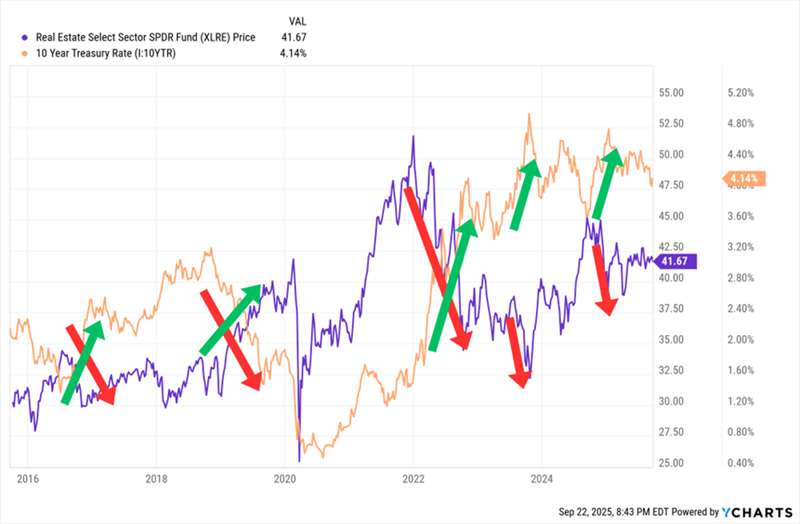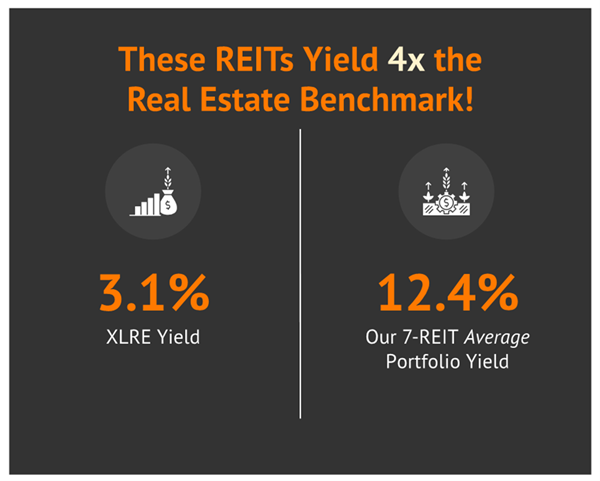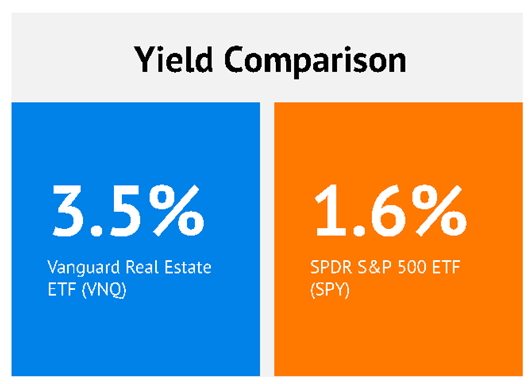The Fed has finally cut rates, and if the “dot plot” is any indication, it won’t be the last. This is fuel for real estate investment trusts (REITs)—they thrive when borrowing costs fall and their fat dividends shine next to shrinking bond yields.
Today we can lock in payouts between 6% and 13% from landlords set to surge as Powell’s long-awaited pivot plays out.
Why do REITs rally as rates fall? These stocks act as “bond proxies” that move alongside bonds and opposite rates. Here is a major REIT ETF plotted against the 10-year Treasury yield. As you can see, when the important rate zigs, the REIT benchmark zags:
REITs Zig When Rates Zag
Rate cuts don’t always hit the 10-year overnight.… Read more



Recent Comments